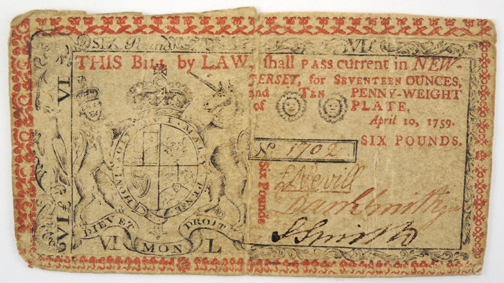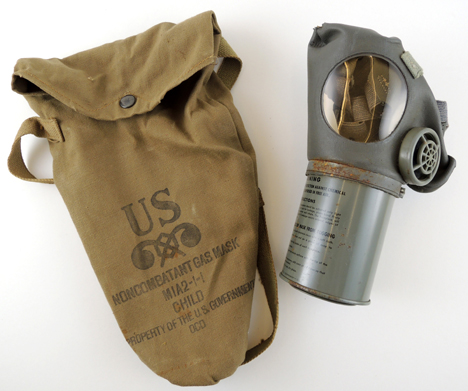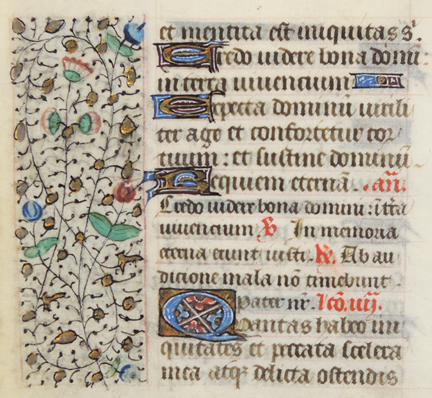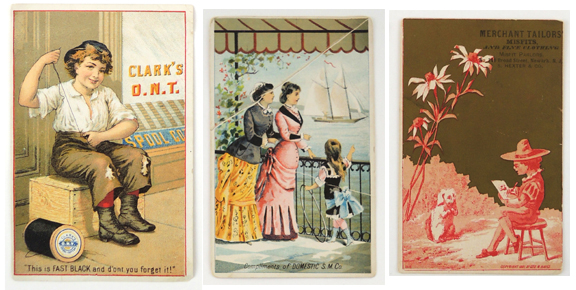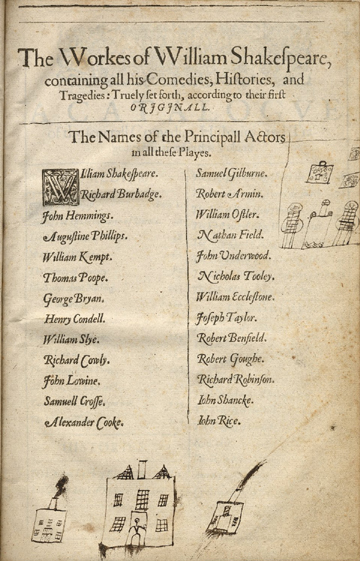 What do you do with one of the most important books in the history of the English language? Well, if you’re Miss Elizabeth Okell, you do a little creative doodling on its pages.
What do you do with one of the most important books in the history of the English language? Well, if you’re Miss Elizabeth Okell, you do a little creative doodling on its pages.
The image above is from the First Folio (officially titled Mr. William Shakespeare’s Comedies, Histories, & Tragedies). Published in 1623, the First Folio is the first collected edition of Shakespeare’s work. Its significance to the world is monumental. Shakespeare’s plays were written to be performed, and many were not published in his lifetime. It’s only through the First Folio that we were able to learn of plays like Macbeth, Julius Caesar, Twelfth Night, The Tempest, Antony and Cleopatra, The Comedy of Errors, and As You Like It. The Folger has 82 copies of the First Folio, by far the largest collection in the world (currently, just 233 copies are known to exist).
This particular First Folio bears the inscription “Elizabeth Okell her Book 1729,” on one of its pages. It was a family treasure passed down through the generations from 1630 to the late 1800’s. While it’s not entirely clear if Elizabeth made the doodles herself, someone did it. I especially like this one. It appears to be some chairs and a table with paintings on the wall. Maybe it’s a room? Maybe it’s a stage set?
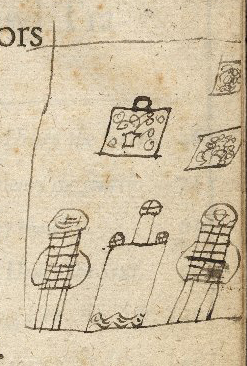 Oh, and did I mention that the First Folio is worth 5 to 6 million dollars? Yup. That’s an expensive little drawing pad. I saw this First Folio and other absolutely amazing treasures during a visit to the Folger Shakespeare Library in Washington, DC.
Oh, and did I mention that the First Folio is worth 5 to 6 million dollars? Yup. That’s an expensive little drawing pad. I saw this First Folio and other absolutely amazing treasures during a visit to the Folger Shakespeare Library in Washington, DC.
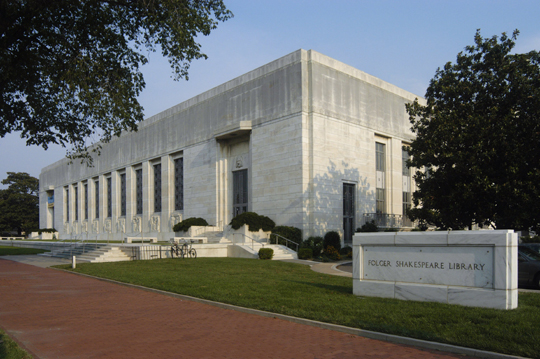 The Folger is the world’s greatest collection of Shakespeare materials. It also has major collections of Renaissance books, manuscripts, and works of art. Take a look at the library’s exhibit space, The Great Hall (which is open to the public and requires no admission fee):
The Folger is the world’s greatest collection of Shakespeare materials. It also has major collections of Renaissance books, manuscripts, and works of art. Take a look at the library’s exhibit space, The Great Hall (which is open to the public and requires no admission fee):
 And here’s an image of one of their reading rooms. Specifically, this is the Gail Kern Paster Reading Room. See the huge table in the foreground? It’s from the 17th century (and I got to pet it).
And here’s an image of one of their reading rooms. Specifically, this is the Gail Kern Paster Reading Room. See the huge table in the foreground? It’s from the 17th century (and I got to pet it).
 My absolutely favorite part of the Folger, however, is its theater.
My absolutely favorite part of the Folger, however, is its theater.
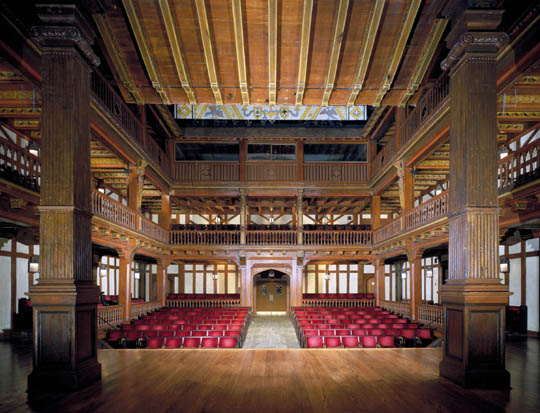 Walking into the theater is like walking into a gorgeous, wood-paneled dream. It’s a beautiful acknowledgement that Shakespeare is meant to be acted, seen, heard, and felt. In fact, the Folger’s collections, its exhibitions, and its theater form the perfect trinity. Preservation of, education about, and devotion to the works of Shakespeare.
Walking into the theater is like walking into a gorgeous, wood-paneled dream. It’s a beautiful acknowledgement that Shakespeare is meant to be acted, seen, heard, and felt. In fact, the Folger’s collections, its exhibitions, and its theater form the perfect trinity. Preservation of, education about, and devotion to the works of Shakespeare.
Not surprisingly, the Folger also has a stupendous Education Department, with a full roster of community, school, and teacher education programs. In 2016, the Folger is launching First Folio! The Book that Gave Us Shakespeare, an ambitious traveling exhibit that will take the First Folio to all 50 states, Washington D.C., and Puerto Rico. In addition to the exhibit, the host sites (which include 23 museums, 20 universities, 5 public libraries, 3 historical societies, and 1 theater) will offer free educational programs and related events for the general public and families. It’s a huge undertaking, which is being deftly directed by Maribeth Cote, the Public Engagement Coordinator.
I asked Maribeth to give me a Shakespeare quote that describes her feelings about her endeavor, and she gamely stepped up to the plate:
“O, sir, you had then left unseen a wonderful piece of work, which not to have been blest withal would have discredited your travel.”
Antony and Cleopatra – 1.2.169
First Folio! The Book that Gave Us Shakespeare has been made possible in part by a major grant from the National Endowment for the Humanities: Exploring the human endeavor, and by the generous support of Google.org and Vinton and Sigrid Cerf. The exhibition is a partnership between the Folger Shakespeare Library, the Cincinnati Museums Center, and the American Library Association.
All images courtesy of the Folger Shakespeare Library.
 Have a reluctant reader who might appreciate good race? This simple project will get them raring to read letters and words with the assistance of their own personal reading robot! Built out of things in your home or office, it’s low tech, but high levels of F-U-N!
Have a reluctant reader who might appreciate good race? This simple project will get them raring to read letters and words with the assistance of their own personal reading robot! Built out of things in your home or office, it’s low tech, but high levels of F-U-N!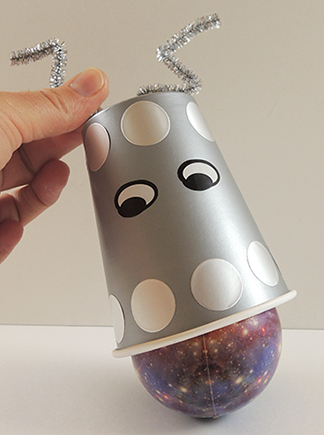 Next, write alphabet letters on Post-it notes and stick them to a tabletop. Have the reader and their robot sit on the opposite side of the table. As you call out the letter, they can slide and release their robot towards the proper Post-it!
Next, write alphabet letters on Post-it notes and stick them to a tabletop. Have the reader and their robot sit on the opposite side of the table. As you call out the letter, they can slide and release their robot towards the proper Post-it!
